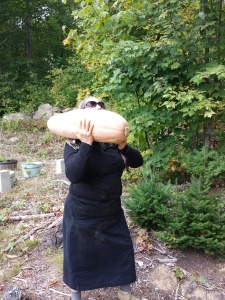It is the day after 9/11. I have been thinking how one best commemorates and memorializes such a day of devastation.
To be frank, lately I’ve been feeling rather demoralized. Thanks to social networking and the news, I often feel bombarded by depressing information and trends. One can say, “Well, just don’t read/look at that stuff!” but to do otherwise is to bury one’s head in the sand.
Our world is becoming increasingly evil, and we simply can no longer sit back in our recliners and watch the world go by.
I think many people are unaffected by world current events for a variety of reasons.
One reason is location. Many times things are geographically far removed from where one lives. This is especially true in Maine, where people feel somewhat immune not only to the world’s problems, but to problems in American cities. That is one of the reasons people choose to live in Maine and raise families here, after all – – one can separate oneself from many of the problems, politics, racial and religious intolerance, rude behavior, materialism and crime that typically plague cities!
Another reason is denial. “It won’t happen here/to me.”
Next comes helplessness. “Even if it’s in my own backyard, there is nothing I can do about it anyway.” Or, “We can’t solve the world’s problems. I am just one person against the multitudes.”
And there is apathy. “They deserve what they get.” Or “That’s their problem, not mine.”
The worst is hopelessness. “The world is such a terrible place, there is little point in living/having children/thinking of a future. Why would I want to live in a world like this anyway?”
Especially in America, where life is relatively easy, people take the pursuit of happiness very seriously. We have incredible personal freedom. It is difficult to fathom true evil and what our lives would be like if it came knocking on our doorsteps due to a lack of actual experience (thank G-d!).
One reaction is “prepping.” I have studied “prepping” to some degree and confess to a somewhat morbid fascination with it (click here for a prepper’s vocabulary tutorial). There are many, many aspects to prepping that are extremely commendable. It is certainly worthwhile for EVERY household to have emergency supplies on hand, from first aid to water to a non-perishable food supply. Anyone who has been without power for a week or more due to a natural disaster can attest to how quickly things deteriorate, and how important being prepared can be.
But there is an aspect of prepping that simply goes against my personal code, and that is, “Every man for himself (and his family).”
Now if things get dire, believe me, you are going to be looking out for your family first. But die-hard preppers take this to an extreme, at the expense of community and community spirit.
More than anything else, even the incredible outright miracles that people experienced, what I gained from reports from Israel during the recent Gaza war, was this very intense community support and team spirit that not only did not lessen the quality of their community and individuals’ lives; the people were empowered and sustained by it. There were countless stories of acts of selfless giving and sacrifice, for the good of community. Despite constant danger and threats against them, people were not demoralized; they actually became stronger, knowing that everyone was working on behalf of the other, together. People under constant bombardment in the South of Israel were welcomed into the homes of total strangers in the North of Israel. They were given meals, beds, rest, and sympathy at no charge, and were invited to stay at these strangers’ homes for as long as they needed. People from all over Israel baked, cooked, and bought meals for soldiers, which the civilians brought to the front; they sent socks and personal hygiene items and even bullet-proof vests along with personal notes of encouragement. There was an unprecedented amount of unity and love; and that, even more than fighting an enemy, was what gave people strength and a feeling of hope.
I am going to say something harsh: we don’t have a monopoly on chesed (lovingkindness). I am addressing this specifically to Jews and Catholics, since both groups are renowned for their amazing charity work. When charity work is done in the name of religion, especially when done through organizations, it’s easy to be proud of one’s accomplishments. It’s ironic, isn’t it, that charity work, which should be the most humbling of work, instead fills us with a sense of pride?
The truth is, the concept of charity is something of an enigma. Our motivation is to help someone less fortunate than ourselves. But when we do donate time or money to someone in difficult circumstances, it makes us feel good (and rightfully so). So the question is, who benefits more? The giver or the recipient? And if we didn’t benefit so much as givers, would we still give? (I’ve often wondered if some of the world’s big benefactors would be so generous if their names didn’t appear on buildings or plaques.)
But even more important than giving money to worthy causes: how many of us would give ourselves. I don’t care how wonderful a person you may think you are, until we are faced with a life-or-death situation, NONE of us knows how we will respond. We can only hope and pray that we have the courage to take action; to step up to the plate; even if it comes at the cost of our own lives.
Many Jews (and Catholics, too) are schooled with the idea of self-sacrifice for a higher purpose. Catholics have their martyred saints and Jews are told inspiring stories about people who made heroic choices during the Holocaust, for example. This is all good. But we need to step outside of our religion, I believe, and devote some time to stories of heroic deeds that are done by average people, people who don’t necessarily share our culture or our religion or are super-beings or saintly giants. Because when evil is at our doorstep, we need reassurance and encouragement that there are still good, everyday people in the world, even if they are not like us. When times get rough,we are going to be dependent on one another, not just people who are our c0-religionists or from the same culture.
Which brings me back to 9/11. There are lots of public memorial ceremonies all around the country. It is also natural that children will not be as affected by 9/11 as are adults, since they didn’t experience first-hand what took place in America that day and for them, these memorial services will have less of an impact. I therefore think that every school in America – – especially parochial schools – – should devote the first 2 hours of the school day on 9/11 to videos about that day. But not only videos showing the tragedies – – videos showing the triumph of human spirit, so children can see not only that even one person can make a difference, but that when people join together, they can make an even bigger difference and make life worth living. That people are good, and that yes, they can combat evil. There is hope for mankind.
Here are two examples of videos I find appropriate to memorialize 9/11, especially for children in school as well as those of us adults who need a little moral fortitude now and then. The people in these short documentaries are true heroes, but really they are “simple” people with very profound messages.
The first is called Boatlift, An Untold Tale of 9/11 Resilience. Narrated by Tom Hanks, it is about the largest evacuation by sea in history: the rescue of civilians from Manhattan by boat during 9/11. To put this in perspective: the 2nd largest evacuation by sea in history was during WWII in Dunkirk, when 339,000 British and French soldiers were rescued over 9 days. On 9/11, nearly 500,000 civilians were rescued by boats in an unplanned mission in just 9 hours.
Here is what some of those boat captains said:
“I have one theory in life: I never want to the say the word, ‘I should have.’ If I do it and I fail . . . I tried. If I do it and succeed . . . better for me. And I told my children the same thing. Never go through life saying ‘I should have.'”
“Average people: they stepped up when they needed to. They showed me when American people need to come together and pull together, they will do it. ”
“The thing that was the best: everyone helped everyone.”
“It was the greatest thing I ever did in my life. ”
“I was honored to be part of it.”
The second video is called The Man in the Red Bandana. It is about a young man who sacrificed his own life to save others during the evacuation of the South Tower, and how his red bandana brought his family, friends and community closure and meaning. This video forces us to confront ourselves and ask, what would we do? And then we can only pray that we live up to G-d’s expectations that we have the proper strength of character; that we reach into some hidden deep pocket of our soul and emerge triumphant in spirit.
There is something to live for; and it is greater than all of us as individuals.













































































